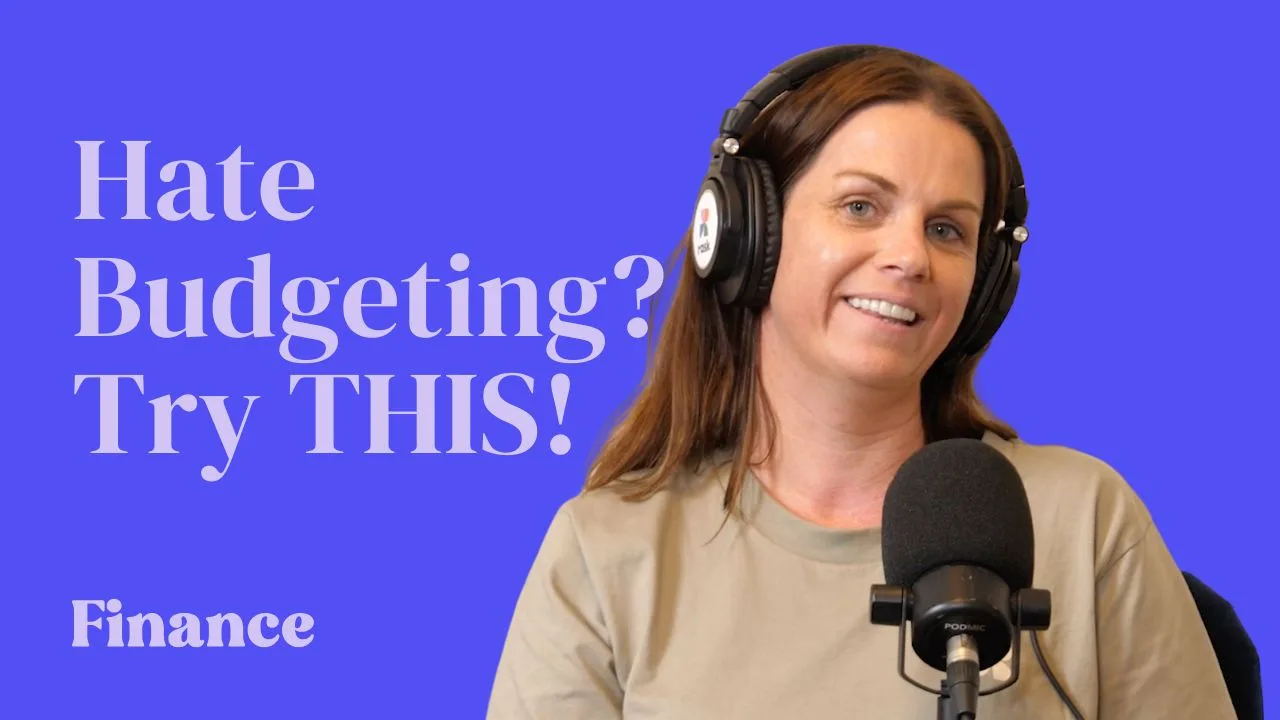Owen and I talk about how to buy shares and ETFs all the time on The Australian Finance Podcast, but we rarely talk about when to sell. It’s usually because most of our listeners are just getting started and the selling conversation can be very overwhelming at the beginning.
But if you’re a bit further along in your journey, you’re probably asking yourself when you should be selling your shares and moving that money into other investments.
When does a BUY become a SELL?
This video and article covers five key reasons that newer investors may consider when selling their shares.
Reason #1 – You have no idea why you purchased the shares to begin with
This happens a lot to beginner investors, where they’re introduced to a particular company through social media, forums or their taxi driver. You end up with investments in your portfolio that you know nothing about, and potentially lack the awareness and conviction to hold throughout challenging periods.
In this case, you can decide to actually do the work of researching the company (see our 5-part checklist) and make an informed decision of whether to keep the business in your portfolio, or call it a day and close your position.
Example: While just getting started with investing, Patrick opened a CommSec account and started to buy random companies he saw in HotCopper forums.
A year later Patrick has figured out how he wants to invest for the long term, and these companies don’t align with his new investment approach. Since he doesn’t want to waste time researching each one, he decides to sell them all.
Reason #2 – The investment case for the company changes
If you’ve researched a company and put together your investment notes, you may also make note of the reasons why you’re holding and what would make you sell. Over the years, companies change direction, make acquisitions, sell new products/services, go to court, change CEOs, get good and bad press and so on.
Not all these changes will be positive for the company, and sometimes they’ll mean you no longer want to invest in a particular company. By making notes when you invest in companies and staying on top of their ASX announcements, you’re able to make an informed decision when any changes are made.
Example: Natasha spent twenty hours researching company XYZ a few years ago, before deciding to invest $5,000 in it. However, a few years later the company made an acquisition that Natasha didn’t think aligned with the business.
After reviewing her initial research notes and learning more about the current situation, she decided to sell her shares in company XYZ.
Reason #3 – It falls outside of your ethical investing framework
Just like us, companies change their minds too sometimes. Whether that’s their approach to growing the business, hiring employees or dealing with their supply chain. Although a company previously fell within your ethical framework when you invested in it, something might have changed along the way – and that’s okay!
By having a solid outline of your own ethical investing framework (and what falls inside and outside of it), you’ll be able to make the tough calls on when to sell a company. We’ve got a free checklist to help you identify your own values when investing, alongside our wonderful ethical investing course.
Example: Raymond buys shares of Westpac because of the fully franked dividends, but after further research, following the Royal Commission, he believes it’s no longer an ethical investment. So he decides to sell and get his dividend fix from an ASX 200 ETF.
Reason #4 – You need to rebalance your portfolio
A common approach to building your portfolio is to use a core and satellite approach or strategy.
Core – your strategy is all about the long run. How are you going to be invested for 15 to 20 years? It’s about deciding how much growth (riskier) versus defensive (protective income) assets you have in your portfolio.
For example, for a young person with high risk tolerance, it might be 80% growth (ASX and global shares, REITs, LICs, funds) and 20% defensive (bonds, cash, etc.).
Satellite – is the tactical part of your portfolio. You take a small part of your portfolio (e.g. 5% – 20%) and make investments with a 2-5 year view.
For example, you might think, “I’m going to add an extra 10% of my overall portfolio to small-cap shares for extra growth.” You then write down your reasons, determine how you’ll do it (funds, ETFs, individual shares, etc.) and execute.
How does this relate to selling?
You can use your core-satellite strategy, which is often written down in an Investor Policy Statement (IPS), as your guide rails. Like a bowling ball bouncing off a bumper or a handrail up some stairs, your strategy keeps you going in the direction you want, regardless of your short-term mindset (fear, greed, envy, etc.), which often changes due to market conditions.
Good investors will use their strategy and rules contained in their Investor Policy Statement to set ‘rebalancing rules’.
Example: If Sally wanted to invest 80% in growth assets like shares, but after two years she noticed her portfolio mix rises to 88% in shares and 12% in defensive/income assets, she could add a rule in her IPS to say:
“I can rebalance whenever my portfolio is 2.5% away from my strategy” and “I must rebalance whenever my portfolio is 5% away from my strategy.”
These rules help you make good decisions when the situation can seem scariest.
Reason #5 – You’ve found better companies to invest in
There’s a cost with everything we do. By choosing to hold Company A shares at a full value, you might be giving up the opportunity to buy Company B shares when they’re cheap, or vice versa.
Hamish Douglass, the renowned fund manager from Magellan Financial Group (ASX: MFG), and Chris Judd, the former AFL superstar turn private investor, both told Owen on The Australian Investors Podcast that they think of their portfolio as a sports team, with substitutes on the bench (i.e. your watchlist) waiting for a spot on the field.
Selling shares because you find a better company to invest in is a great reason to exit a position. However, it’s not always clear cut and you need to make sure you find a new opportunity that outweighs the taxes and fees involved in selling.
Keep a journal of your trade decisions, because a lot of new investors (i.e. those with less than 5 years’ experience) find themselves selling for this reason more often than they’d care to admit. After five years, many of the best new investors can count the number of shares they’ve sold on one hand.
“I could improve your ultimate financial welfare by giving you a ticket with only 20 slots in it so that you had 20 punches—representing all the investments that you got to make in a lifetime. And once you’d punched through the card, you couldn’t make any more investments at all… Under those rules, you’d really think carefully about what you did and you’d be forced to load up on what you’d really thought about. So you’d do so much better.” – Warren Buffett
TLDR: 5 reasons to consider selling your shares
If you’re just here for the short and sweet summary, here we go:
- You have no idea why you purchased the shares to begin with
- The investment case for the company changes
- They fall outside your ethical investing framework
- You need to rebalance your portfolio (because it’s out of balance or your goals have changed)
- You’ve found better companies to invest in
Of course there are many more reasons to include on this list and selling will be a personal decision for every investor, but I hope that’s given you a starting point during your investing journey.




